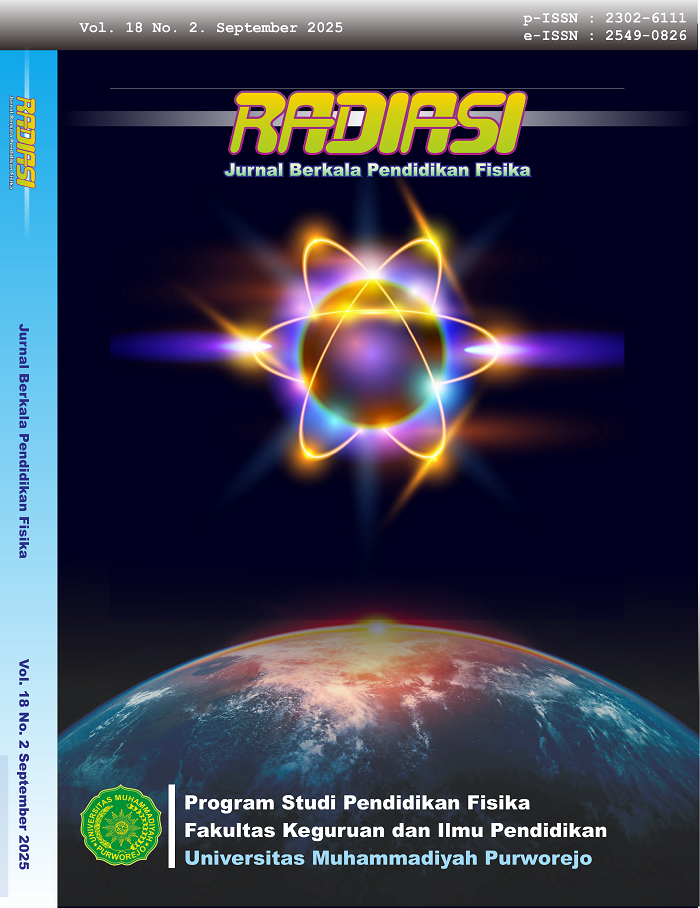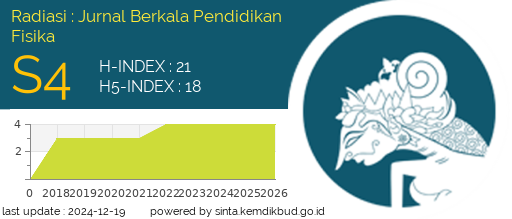The Effectiveness of Technology-Based PhET Simulation-Assisted PBL Models to Minimize Misconceptions of Force and Motion Material
Abstract
This study aims to determine the effectiveness of the Problem-Based Learning (PBL) model assisted by PhET simulation in minimizing misconceptions and improving students' conceptual understanding of force and motion material. The study used a quantitative approach with a pre-experimental design in the form of one group pre-test – post-test. The subjects of the study were grade VII students of SMP Negeri 2 Gebog. The instruments used were diagnostic tests based on the Certainty of Response Index (CRI) to identify misconceptions and pre-test and post-test tests to measure conceptual understanding quantitatively. The results showed that there was a decrease in misconceptions by 9 percent after the implementation of learning, as well as an increase in conceptual understanding with an average N-Gain value of 0.422348 or 42.23 percent, which is included in the moderate category. The Moving Man PhET simulation allows students to explore the relationship between motion variables visually and interactively, thereby helping to improve understanding of abstract concepts such as position, velocity, and acceleration. PBL which begins with the use of contextual phenomena successfully builds students' cognitive involvement and encourages critical thinking processes. Based on these results, the PBL model assisted by PhET simulation is considered quite effective as an alternative technology-based learning to overcome misconceptions and strengthen conceptual understanding of motion and force material.
Downloads
Copyright (c) 2025 Linda Yuni Haryanto, Henry Setya Budhi

This work is licensed under a Creative Commons Attribution-NonCommercial 4.0 International License.




